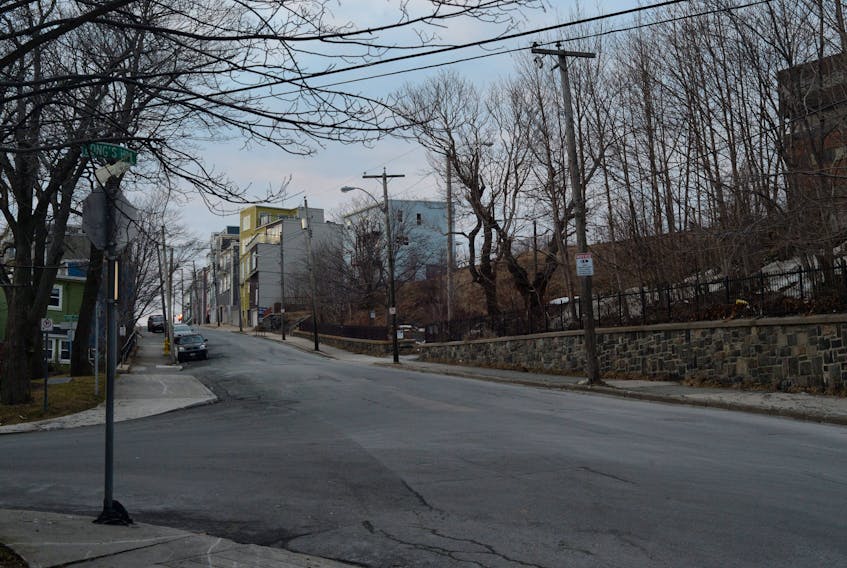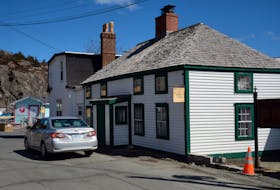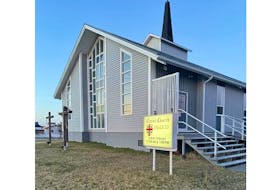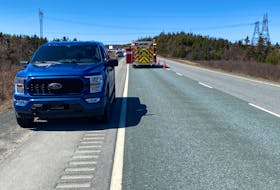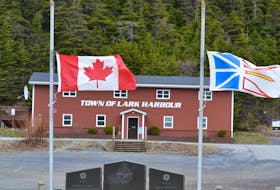For close to a decade, residents of the Long’s Hill area have been confronted by the complex issues that surround street-based sex work.
There are issues of mental health and addictions, of women being targeted by violence, issues that make sex workers some of the most vulnerable people in our communities.
For years, sex workers have been crying out for help.
Now, people are listening.
In a letter received by The Telegram, one resident from Long’s Hill recounted incidents of violence, drug addiction and other problems that need to be addressed. The residents who spoke out on these issues didn’t feel comfortable being identified.
“I was woken from my sleep from the sounds of a woman being beaten. She was yelling that someone was hitting her and that this person owed her money. The noise grew louder and louder as the altercation moved from behind my house to the sidewalk in front of my house.
“At this point, more people became involved and my family watched from our bedroom window trying to figure out, between the loud threats and the hurling expletives, who was hurt, who was the assaulter? One of the men ripped off his shirt and threw a beer bottle against a house.”
The woman being beaten is just one of many disturbing incidents that people in the area hear on a near-daily basis.
“Weeks later, I heard loud cursing from the street. Peering out the window, I saw a man stumbling aggressively, enraged, and lunged down the street in the direction of a woman stood in her doorway. He grabbed her by the arms and threw her onto the sidewalk and punched her. Other men close by reacted equally aggressively towards the man and a group fistfight ensued. The group tumbled up the street towards my house. I shakily held the phone and had great difficulty explaining to the police operator exactly what I was seeing. I remember saying, ‘You need to get here now.’”
Another resident who is raising a young child in the area says they don’t feel safe in their own home.
“I fear for my safety as I clear those 10 to 20 feet from my car to my house. Many of those times, I’m confronted with sex workers soliciting directly in front of or in close proximity to my house. It causes one to be very uncomfortable,” said the resident.
“I realize that the women need protection, but so do we. It seems as though our rights as residents and neighbours are somehow discounted in this discussion. That, or we are seen as uninformed and ignorant to the plight of a sex worker. I identify as a feminist, and have my entire life. Being a feminist does not mean that I do not deserve a safe and respectful place to raise my family.”
One resident said they would move from the neighbourhood if they could afford to.
Robyn LeGrow is the head of the Tessier Place Neighbourhood Association and has lived in the area for about two years. She is one of more than a dozen people who meet on a monthly basis to try to find solutions.
“There have been little wins so far. We’re talking about needle boxes. It’s been a priority that one be put in our neighbourhood. Coun. Hope Jamieson is going to look at the traffic situation in the area that’s conducive to pimps and johns circling and making residents nervous,” LeGrow said.
On Monday, St. John’s city council approved new lighting fixtures and disposal containers for the neighbourhood in an effort to discourage “illicit behaviour” in the area.
“The only way to build trust is to continue to go back to that table and do your part as a committee member,” said LeGrow.
The committee is called Living in Community. The model is based on an initiative started in Vancouver in 2005.
After a crisis where sex workers were going missing and being murdered in downtown Vancouver, residents got together to try to find a way to address the needs of sex workers, of residents and of the neighbourhoods where sex workers operate.
Heather Jarvis, one of the leads of the Safe Harbour Outreach Project, spearheaded an initiative to bring the model to St. John’s.
Jarvis says work is already happening to make things better for the neighbourhood.
“Some things that we’ve discussed over time is recognizing that there are impacts on residents and community and people who have families — who sometimes are experiencing a lot of impacts themselves when the street-level sex trade is right outside their door,” said Jarvis.
“Whether that’s around addictions issues or needles — which we recognize is not inherently tied to the sex trade. There are many neighbourhoods where needles are a huge issue that has nothing to do with the sex trade.”
The group discussions, facilitated by Happy City, have taken place three times over the last three months. Sex workers are at the table, along with resident representatives, sex work advocates, City of St. John’s officials, local business owners and members of the RNC. At the last meeting, St. John’s Mayor Danny Breen and RNC Chief Joe Boland stopped by to show their support.
But the stories of outrage in communities and the abuse of sex workers are not the norm in St. John’s.
Estimates are that of all the sex work taking place in the city, only 20 per cent takes place on the street. The vast majority takes place in homes or in massage parlours — legally, since the Supreme Court overturned all restrictions on sex work in 2013 — with safety assured for workers and their clients.
This is not a story of good people and bad people. This is the story of voices finally being heard, with hopes of change for the better.
“Alice,” who asked to be given a pseudonym, is a sex worker in the city. She’s a young woman. She’s one of the owners of a local massage parlour. She pays her taxes. She abides by the law.
“In 10 years, I would say I’ve had less than 10 really negative encounters — that’s not bad,” she said.
“A lot of the times, the calls and complaints about sex work happening — especially in the focal area — it’s not a sex work issue. It’s a mental health and addictions issue. It’s not about the work, it’s that the individuals also have these issues.”
In Part 2 of this series Thursday, Alice will show how the sex trade can work in communities.
The goal is to make sure people can work together and live together peacefully. It will be a long road, but there is hope that this new approach can work.
Thursday: Safe sex work
Twitter: DavidMaherNL

